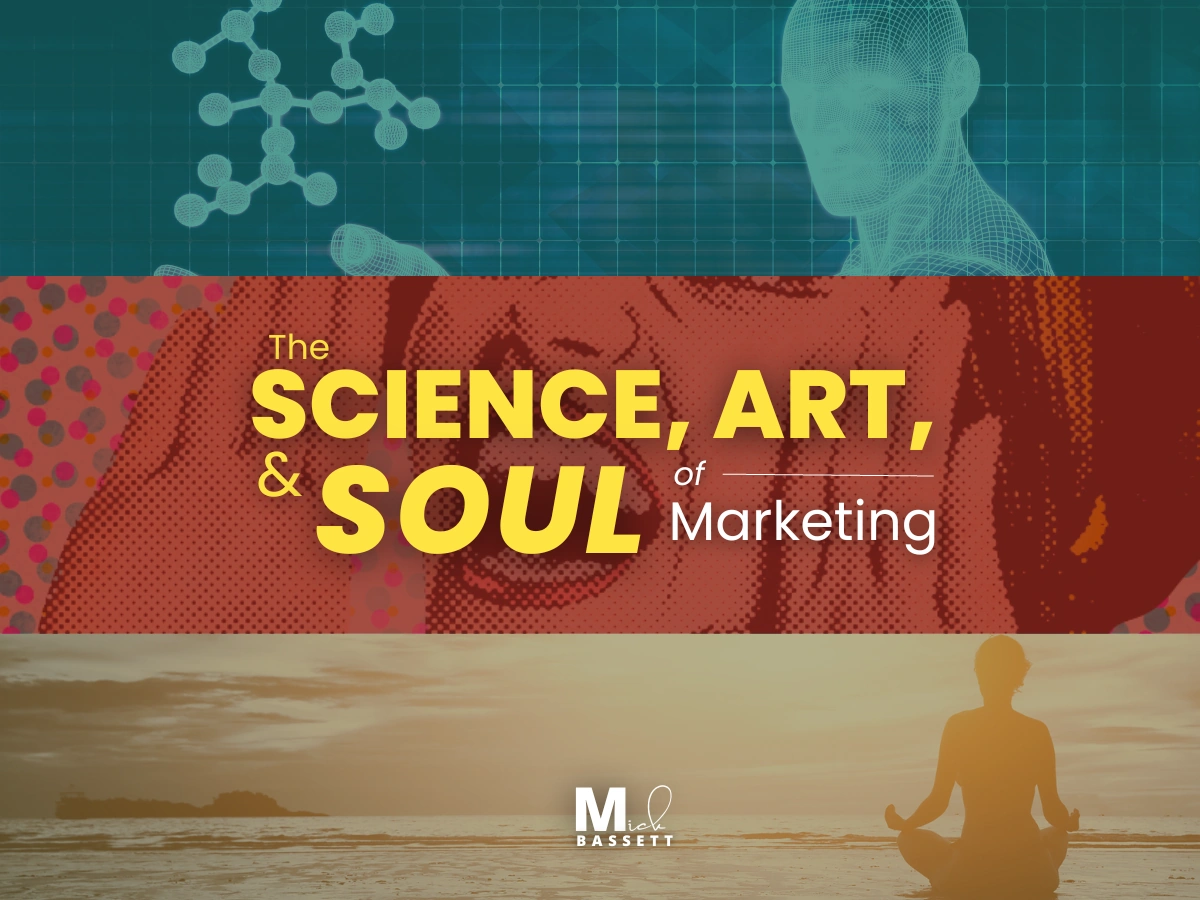Some disciplines are mostly right brain – others mostly left. I love marketing because doing it well requires bringing the whole brain to bear. Creating good marketing is an endeavor as empirical & scientific as it is creative, artistic, & purpose-driven — like coordinating a symphony involving elements of math, art, language, logic, & emotion – even our beliefs & values — all (ideally) functioning together in one happy dance.
What I’m going to describe below isn’t an academic definition of marketing — rather it’s derived from my experience & how I’ve seen it work most successfully. I’ll dig deeper into the concepts here in future articles, but my initial intention is to just build a framework for understanding the active ingredients behind good marketing.
The Building Blocks: Science, Art, & Soul
The building blocks of marketing are — you guess it — Science, Art, & Soul. Together, these three elements provide what we need to know to create & execute good marketing: WHO, WHAT, WHEN, WHERE, WHY, & HOW to do it.
We need all of them — Science, Art, & Soul — to get the whole picture. It breaks down like this:
- Using Science we can learn WHO to target, WHAT to do, & WHEN & WHERE to do it.
- Art is kind of a double-whammy, referring to both “the craft of marketing” as well as creative/artistic features. Both of these contribute to informing HOW to actually put it together so it works.
- The Soul of our marketing is WHY we are actually doing it, beyond just “making money” (usually). Our raison d’être, so to speak.
While this sounds pretty simple, actually doing it is the harder part. So let me describe in more detail what each element involves, starting with the most concrete & easiest to define: Science.
The Science!

The Science of Marketing involves all of the knowable, provable, calculable, empirical, hard facts of the matter. This spans a wide, deep range of topics & knowledge, from performance metrics to audience segments & psychological profiles, & anything in between. What these have in common is that they can be studied & understood from evidence.
To do that we use scientific methodologies to test our hypotheses & record the results. Our goal being to develop & deepen an objective understanding of our circumstances, what happened/is happening/will happen, & why.
For me, this is the foundation for all successful marketing — that the cause and effect of marketing actions can be understood. Which means, in turn, that decisions about marketing should not be made randomly, driven by impulse, or based on emotion. Viewed through a scientific or engineering framework, marketing can, and should, always move systematically toward its goals.
Using the Science of Marketing we can learn things like:
—WHO to target through studying & developing audience profiles, personas, segmentation, etc.
—WHAT to do/say by testing variations, offers, features, etc.
—WHERE to focus with market & audience research
—WHEN to act by studying seasonality, trends, & other variables.
This is crucial to marketing success because it gives the tangible know-how needed to focus limited resources where they are likely to be most effective — then provides feedback so we can further iterate in the direction of our objectives.
Without Science, marketing is just an expensive guessing game!
The Art!

Principally, the Art of Marketing concerns & informs HOW the marketing is done. This involves:
- Creative/Artistic choices — I.e. the sensory experience of the marketing. This includes design choices like colors, fonts, & images, as well as language & experiential elements.
- The “Craft” of doing Marketing — I.e. coordinating the unique elements that comprise the marketing to achieve the desired effect & outcome.
While both of these overlap & are intrinsically connected & informed by the Science, I consider them distinct for two main reasons:
One — the skills & approach for these artistic elements of marketing are distinct versus the science above. Two — strict scientific methods are often inadequate / insufficient in real-world situations.
The reason for this is because the Art deals more with the human elements of marketing, whereas science deals more with measuring & evaluating outcomes.
Marketing would be a lot easier if it were purely science — like performing & measuring chemical reactions. But because marketing fundamentally involves humans & how humans communicate, the logic for how & why things happen the way they do is not always linear. Complex variables like emotion & culture profoundly affect how marketing is received & understood. To make matters more difficult, these variables are moving targets that often change.
Humans are particularly adept at sniffing out “un-human-like” behaviors. Meaning — we’re highly aware of elements like the authenticity & motive when evaluating information — & our default setting is to be skeptical until proven otherwise. To make matters more difficult, we’re highly emotional beings. The way something makes us feel is more important to our decision making than logic or reason.
HOW to take what we learn from the Science, along with the conditions & objectives governing the business, & then package it up & present to people in a way that moves them to feel or act in a desired way is in large part what the Art of Marketing is all about.
It can be complex, challenging, & intimidating, but profoundly effective when done well.
The Soul!

With Science & Art we get a lot of what marketing IS. But we’re still missing a key ingredient: WHY?
Why are we doing the work? Why is it something that matters? Why should people care?
Not all marketing must have a deep & meaningful WHY behind it. But the most impactful marketing often aligns a business, its employees, & its customers around a WHY that is mutually beneficial for all involved.
As an example — for CustomCat (see my brands), we determined our mission was to “Empower Entrepreneurs.” Our WHY for doing the hard work of building the company, was to empower entrepreneurs to build successful online businesses. To provide products & technology to enable entrepreneurship.
This might just sound like a marketing fluff at first – but I assure you it has real significance. Getting the WHY right is critical to aligning the business with its employees & customers toward mutually beneficial outcomes.
So in practice, understanding this WHY helped the business align toward its primary strategic objective — offering products & services that are desirable to entrepreneurs. For our employees, this mission to empower made their work more rewarding & meaningful, which for the business resulted in higher productivity & happier customers. For our customers, it resulted in the business delivering more value to meet their needs, which in turn made them loyal advocates of the business.
This makes the Soul of Marketing work as a multiplier on the total effect of the marketing because aligning these core elements results in more energy in the system. E.g. When customers advocate – that adds more marketing energy to the total. When employees are motivated, they give more energy to their work & think more proactively about solving problems. When a business buys into its WHY, it operates more efficiently because it now has a framework for how it operates & makes decisions.
Next: Digging Deeper — Join Me!
There is so much more to get into on these topics, but hopefully this has at least served as an interesting primer for understanding my persona; approach & thinking on marketing. I plan to build on, revise, & examine in more detail the ideas here in the not-too-distant future. I hope you’ll come along with me for the ride.


